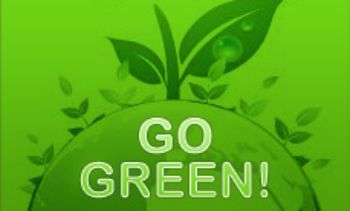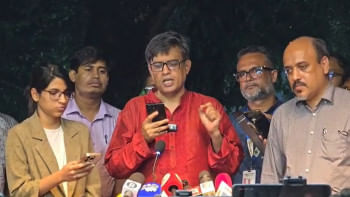ADB spurs Bangladesh to use green technology
 Bangladesh could cut greenhouse gas emissions by around 22 percent within 2020 by introducing a number of clean technologies, according to a study by the Asian Development Bank.
Bangladesh could cut greenhouse gas emissions by around 22 percent within 2020 by introducing a number of clean technologies, according to a study by the Asian Development Bank.
The amount of carbon dioxide emissions is estimated to rise by 5.8 percent a year to reach 168.3 million tonnes by 2030, from 41.3 million tonnes in 2005, the lender said in a report released yesterday.
“It's possible to slash greenhouse gas emissions through big and small changes that would have little or no long-term cost to the end users,” said Mahfuz Ahmed, principal climate change specialist at the ADB's South Asia department.
Replacement of all conventional lamps in the residential sector with efficient compact fluorescent lamps alone could reduce about 4.7 million tonnes of carbon dioxide in 2020.
Greenhouse gas such as carbon dioxide, ozone, or water vapour contributes to the warming of the earth's atmosphere by reflecting radiation from the earth's surface.
At the country level, carbon tax would reduce cumulative greenhouse gas emissions by 9.4 percent in Bangladesh and 21.8 percent in Sri Lanka, the Manila-based bank said.
The study conducted in five South Asian countries -- Bangladesh, Bhutan, the Maldives, Nepal and Sri Lanka -- said the total energy-related greenhouse gas emissions would be 3.2 times higher in 2030 than in 2005 if the countries do not make efforts to curb emissions.
The cumulative emissions from the power sector would decrease by 18.4 percent during 2005-2030, with additional nuclear, wind and municipal solid waste-based power plants.
"In Bangladesh, the sea level is predicted to rise by 45 centimetres by 2050, affecting 10-15 percent of the land area and around 35 million people,” Ahmed said.
The wind power potential is estimated at 4,614 megawatt, but only 2 percent (92.3 MW) is considered technically exploitable in the country because of limited grid access and scattered wind power sites, the ADB said citing another study.The high import duty and value added tax on all raw materials (except solar panels) increase the cost of solar accessories manufactured in Bangladesh, the ADB repor said.
Greenhouse gas emissions from industrial processes would rise by 138 percent during 2005-2030, most of which would come from ammonia production.
Direct and indirect fuel subsidies should be phased out or made more targeted, the study said.
Ministries and countries should work more closely to better plan and develop cross-border energy markets and launch green initiatives.
The annual energy-related greenhouse gas emissions in the five countries are set to rise from 58 million tonnes in 2005 to 245 million tonnes in 2030.
The report said primary energy use in the five nations is likely to be almost 3,600 petajoules by 2030, 2.4 times higher than in 2005, largely due to rising consumption from industry and transport.
Clean and low-cost technologies include replacing fossil fuel generation with renewable or cleaner energy such as solid waste or gas; upgrading to more fuel-efficient technologies; or using greener products.
Introducing a carbon tax that rises along with the global carbon price could slash greenhouse gas emissions by a fifth in 2030 in the five countries.
India, the biggest energy consumer and largest emitter of greenhouse gases in the region, though not covered by the study, will increase its energy consumption to about 63,000 petajoules in 2030, an increase of more than five times from 2005, the study said.

 For all latest news, follow The Daily Star's Google News channel.
For all latest news, follow The Daily Star's Google News channel. 



Comments